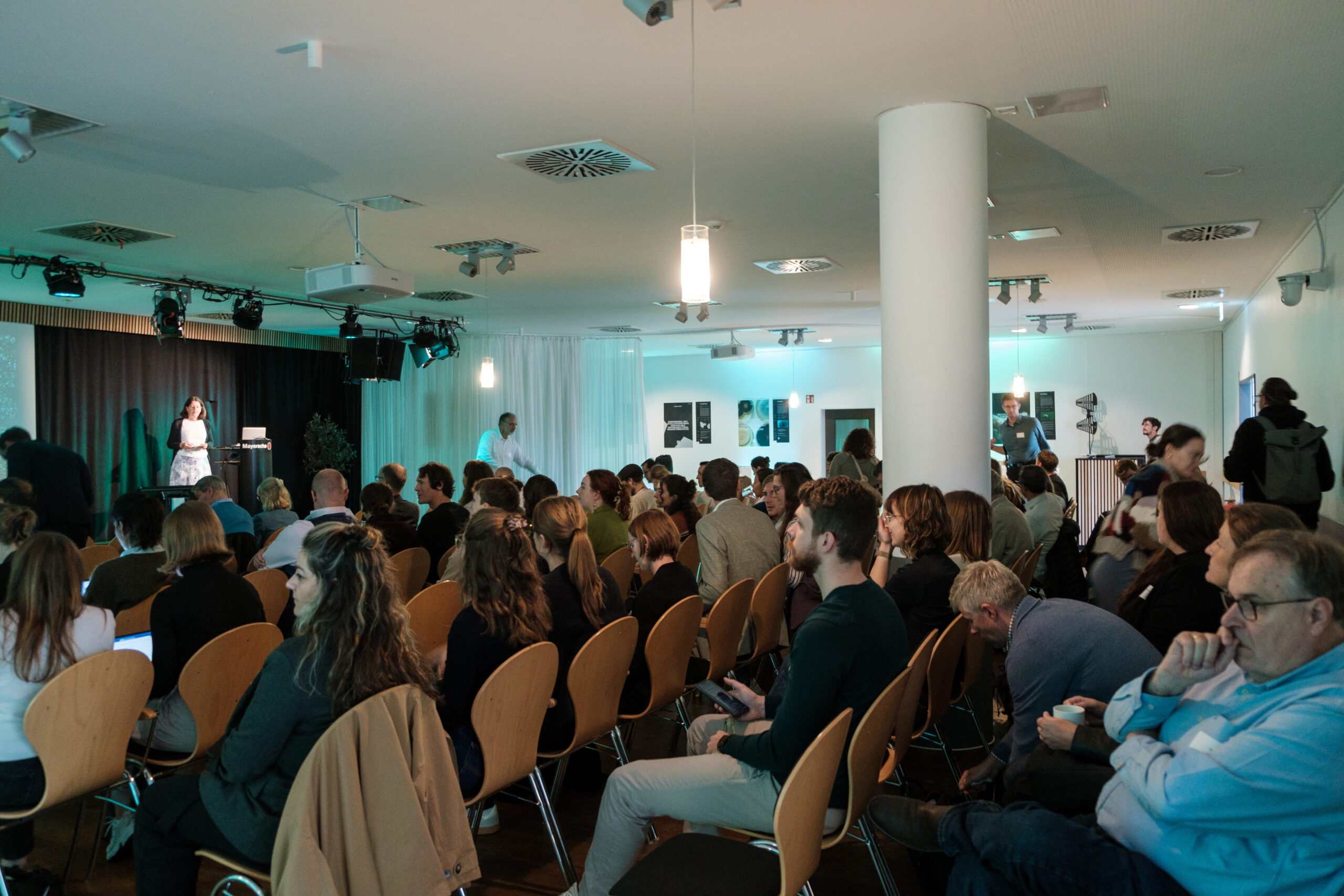The NaturFutur project, a cooperation between the Museum für Naturkunde in Berlin and Bioökonomie.de, focusses on various topics of the bioeconomy. It spans an arc between abstract science on the one hand and the reality of citizens‘ lives on the other. NaturFutur addresses questions of daily consumption as well as questions of sustainable production with the help of new technologies. As a bridge between science and practice, the project connects diverse target groups.
Dr. Marco Schmitt (RWTH Aachen; TransitionLab project) and Claudio Flores (Mimotype GmbH; GOLD project) from BIOTEXFUTURE took part in a conversation hosted by NaturFutur on the topic of “Fashion from Algae – Ways towards a sustainable textile industry” on November 11, 2021.
The BIOTEXFUTURE innovation space aims to address using algae and other natural resources as a sustainable source of raw materials. Funded by the German Federal Ministry of Education and Research over a five-year period, the consortium is jointly led by RWTH Aachen University and adidas. One of the projects funded in the innovation space is AlgaeTex, which also involves scientists from Fraunhofer IGB and the University of Bayreuth. Together, the AlgaeTex team wants to demonstrate a technically feasible way to produce materials for textile applications from algae: so-called thermoplastic biopolymers.
In addition to the research-oriented players, there is already a fast-growing young fashion community that is boldly experimenting with novel natural materials and alternative manufacturing processes. Some of these creative minds were represented with special individual pieces in the NaturFutur exhibition. Essi Johanna Glomb and Rasa Weber (Blond & Bieber), for example, do without petroleum-based dyes and instead use color pigments from microalgae for their prints.
The Green Fashion Fair in Berlin brings young designers and sustainable fashion labels together. This year it took place from September 10 to 12 as part of Berlin Fashion Week 2021. Experts and creatives from the field of sustainable fashion presented current examples, there were showrooms for sustainable labels and innovative materials as well as numerous events on the topic, curated by Claudia Albrecht, one of the founders of the Green Fashion Fair, together with partners. All the players are united by the question of how these approaches can be brought to consumers on a large scale. The new materials must be useable in the manufacturing process and meet the demands of the product in question. The production of the raw materials themselves is also a science on its own right. Algae, for example, are grown in special photobioreactors under the influence of light; each type of algae requires its own conditions. Large plants already exist for the food industry, but they are not yet in widespread use for textile applications.
The conversation shows how the different perspectives of researchers, designers and consumers have to come together to realize fundamental change.
Please enjoy watching the full conversation here.




